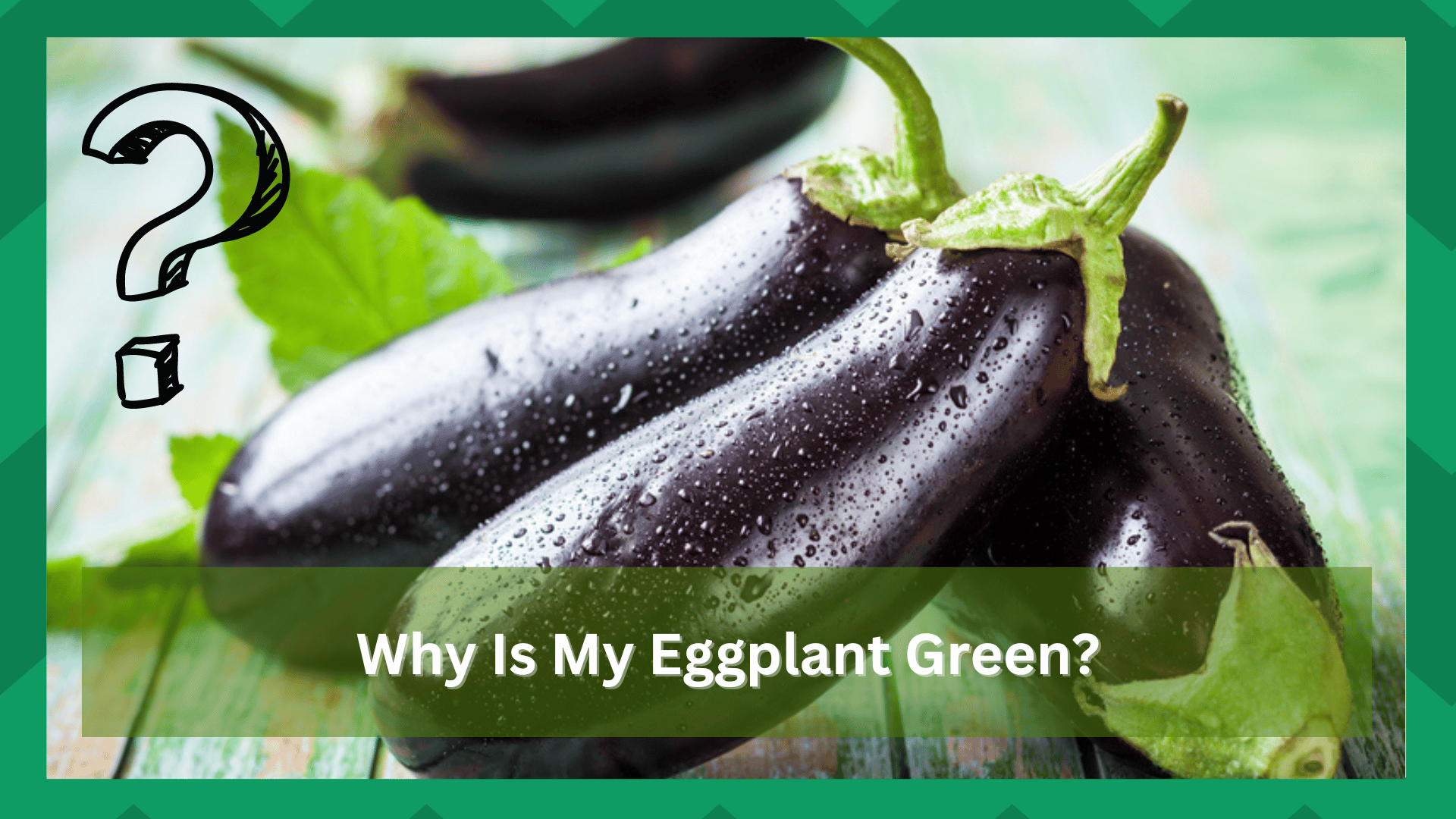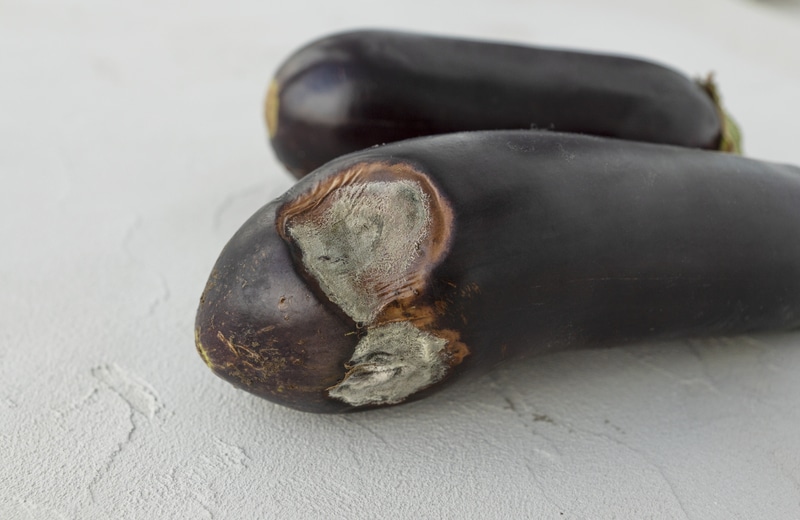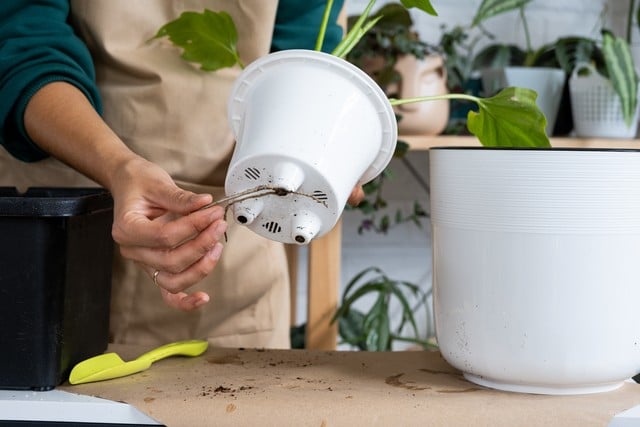
Eggplant or brinjal, also called aubergine, is considered a vegetable that is eaten in most parts of the world. It is primarily purplish, has a spongy texture, and has a glossy effect.
It is often used as a vegetable in cooking, but there are other cooking options for eggplants in a wide range of cuisines.
So, if you want to grow these eggplants for any reason, whether for commercial reasons or having fresh vegetables for your own kitchen, you will need to make sure that you are doing it right.
Today we’ll be covering why your eggplant might turn green.
Altogether eggplants have at least fourteen types of colors. While purple is the color that is most commonly found on eggplants, there can be other colors seen as well.
Especially eggplants tend to turn green, which is something other than what you would like to have on your eggplants.
That is why you will need to make sure that your eggplants are not turning green. Although sometimes your eggplant turning green is not essentially as alarming as it may seem.
The green color of the eggplant doesn’t necessarily mean that the eggplant cant is used at all, but sometimes a few problems may be linked to it.
A number of issues can arise while growing eggplants and their color change is just one of them A few things that you will need to take care of to ensure that the eggplants are not turning green are listed below.
Why is My Eggplant Green?
- Overripe
As opposed to the common opinion, most people think that if the eggplant is green, it might be underripe, but that is not true at all.
An eggplant turns green if it has not been picked while properly ripe and has gone overripe or if it has overmatured. This causes the fruit to have a dull, bitter taste.
So, if you are seeing your eggplants turn greenish, it is the right time to pick them while they’re firm and fresh and use them for cooking or any other application that you might have in mind.
That will undoubtedly help you to avoid the problem of your eggplants turning green, and you will be able to use them while they are fresh and adequately ripe to have the right taste and texture on them as well.
- Strain
It would help if you were mindful of the strain of eggplant that you are growing.
While most eggplants are purple in color, some of the most common strains of eggplants are green, and you will have to ensure that you are getting the right strain.
The popular eggplant (Solanum melongena) cultivar, Black Beauty, traditionally produces glossy, purple fruit; however, some of its cultivars produce green fruit as well.
If you have planted some seeds from a green eggplant strain, the fruit will grow green as well.
That is not something that you will have to worry about if the strain of the eggplant is green, and you will be enjoying a distinctive taste on such eggplants as well, which will help you out with enhancing the whole experience.
Some plants mostly grow green with some purple color. They can start to show colour up in the harvert. This change could be because of cross-pollination in the eggplant seeds.
Cross-pollination shows up in next year’s seeds. Eggplant could have another green-purple fruit forming.
- Sunburn
Eggplants have a spongy texture to them, and that can cause you to have several problems with the sun.
It needs the right sun to grow, but too much sunburn can also cause you to have several issues that you wouldn’t like to have, including the eggplants turning green.
So, you will have to make sure that the plants are growing under ample shade if you are living in some area that gets more sun than usual, and that will help you avoid the eggplant fruits growing green.
With that being said, the skin will also be curling up as a sign of sunburn, so you can know that they are turning green due to the sun.
- Nutrition
Another factor you will need to be careful about is the nutritional elements in soil and water that are necessary for the eggplants to grow.
If the plants are a victim of malnutrition and the soil you have is not ample for them to grow ideally, that can also turn your eggplants green, and you will need to take care of that optimally by adding the organic fertilizers to the soil that will help you out in the proper manner.
You will be making it work perfectly for you.
In addition to all that, soil conditions and growth rate depend a lot on it as well. So, you will need to check on the water drainage to ensure that the eggplants are not taking in more water than they need, which will help you figure out the problem just right.
In addition, you will also need to test the soil for nutrient levels and maintain them regularly.
- Lack of water
Eggplant requires at least 1 inch of water per week; it is recommended to soak the eggplant thoroughly. This way, you can avoid short waterings, which can cause the roots to turn shallow.
Therefore, make sure to check whether your eggplants have ample water or not.
- Overwatered
Similarly, it would be best if you were careful not to overwater your eggplant as too much water can cause them to wilt and drop and result in its color changing as the eggplant becomes weaker.
- Pests
Pests also play a massive role in causing a color change in the eggplants and their defoliation. Spider mites and Aphids are the common pests found on eggplants.
It is recommended that such pests be treated by insecticides, primarily insecticidal soap, which is supposed to be applied weekly to treat the plant.
The pre-harvest (PHI) interval is the waiting time after spraying before harvesting, and it is crucial to keep track of that.
It is best recommended that Insecticidal soap sprays be applied in the early morning or late evening to increase drying time.
Broad-spectrum insecticides are to be sprayed late in the evening to reduce the effect on pollinating insects.
- Nitrogen Deficiency
Deficient plants become pale green/yellow as chlorophyll and chloroplast synthesis is inhibited. This deficiency causes stunted growth, and the leaves also wither.
The quickest way to fix Nitrogen deficiency is by applying organic or inorganic fertilizers; nitrate and ammonium-based fertilizers work the fastest.
- Magnesium Deficiency
Eggplant is also known to be very susceptible to Mg deficiency; therefore, the recommendation for Mg level in eggplant is much higher; even if your plant looks healthy, its leaves may be yellow, and the yellow color possibly be at the edges as the veins of the leaves are still green.
Boron Deficiency can also be the cause. Epsom salt dissolved in water is one way to fix magnesium deficiency.
- Growth
It is necessary to provide a safe and suitable environment for the eggplants to grow, and to prevent them from changing their colour.
Eggplants require sunlight. It is essential to decide on a planting sight as an area that gets at least six hours of direct sunlight each day.
You need to properly prepare the soil. Eggplants prefer loamy, well-drained soil with a pH between 6.0 and 6.5. If there’s uncertainty about whether your soil is alkaline or acidic, it is recommended to perform a soil test.
Adding a layer of black plastic mulch on the topsoil will help warm the soil before you proceed to transplant the eggplant seedlings.
Eggplants require sufficient space to grow. It would help if you transplanted the eggplant seedlings at least two to three feet apart, and the seedlings should be transplanted in holes approximately one inch deep, ensuring that you do not disturb the root ball.
It would help if you covered the eggplant seedlings with about half an inch of soil. It is essential to water the planting area well to settle the soil.
You need to treat the soil with a balanced fertilizer, pesticides, and organic matter during the growing season to ensure that the earth is evenly soaked.
The Bioorganic and biological materials living in compost help activate the soil’s contents (including fungi, bacteria, minerals, and others). The soil’s contents help to strengthen the immunity of your plants and will also expand your crops’ lifetime.
It would be best if you also weed often, as it is an essential step for proper eggplant maintenance. It would be best if you made weeding part of your everyday gardening routine.
You’ll want to weed in the morning when the soil is damp, which will make it easier for you to remove the weeds.
Weeding also helps to prevent fungus or verticillium wilt from infecting your plant, and such infections could also lead to color changes in the plant.




